Top 5 White Hat Hacker
Diposkan oleh
Ivan
Label:
Hacker
Well, this time I wanted to share the knowledge of anyone good hacker (white hat hacker):
1. Stephen Wozniak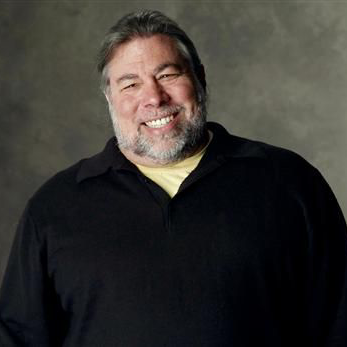
is a mechanical computer that is topnotch in the USA, he is a co-founder (inventor also sich) from Apple Computer with
Steve Jobs (CEO Apple.Inc).
In 1975, he worked at Hewlett-Packard and helped his friend Steve Jobs design video games for Atari. At that time, Wozniak had been buying computer time on a variety of minicomputers hosted by Call Computer, a timesharing company. Computer terminal at the time were primarily paper-based; thermal printers such as Texas Instruments Silent 700 were the most advanced. Wozniak saw an article in Popular Electronics magazine called 1975 issue of how to build your own computer terminal. Using the tools that can be purchased at the store, Wozniak to design and create computer named Computer Conversor, Sebuat teletype video that can be used to access the minicomputers at Call Computers. Design and subsequently bought by Call Computers and some units were sold.
In 1975 Wozniak started attending meetings of a club called the Homebrew Computer Club. New microcomputers like the Altair 8800 and IMSAI inspired her to put a microprocessor into his video teletype to make it a complete computer.
At that time a lot of CPU available is the Intel 8080, $ 179 and Motorola 6800 $ 170. Wozniak is more interested in the Motorola 6800 but the price is too expensive. He was then unconscious and only computer design on paper.
When the MOS Technology 6502 chip manufacturing in 1976 with $ 20, Wozniak wrote a version of BASIC for the chip and started to design a computer to run it. 6502 chip was designed by the same person who had designed the Motorola 6800. Wozniak then managed to make the machine and took it to the meetings of the Homebrew Computer Club to be exhibited. At one meeting Wozniak met his old friend Steve Jobs is interested in the commercial potential of small computers.
Steve Jobs and Steve Wozniak had been friends since long. First met in 1971 when a friend introduced Wozniak who was then aged 21 years to Jobs who was 16 years old. Jobs persuaded Wozniak to make computers and sell them. Jobs approached a local computer store The Byte Shop who are interested in buying a computer but only the computer that came fully assembled, the store owner Paul Terrell said he would order 50 units pay $ 500 only.
Wozniak artificial computer only has a few advantages. One of them can use the TV as a monitor in which time many computers do not have a monitor at all. This monitor is not like modern monitors and displays only the text at 60 characters per second. This computer named Apple I and bootstrap code on ROM, which makes it easier to start. Finally, with coercion Paul Terrell Wozniak also designed a cassette mechanism to open and save the program with the speed of 1.200 bits / sec, a speed high enough at the time. Although the computer is fairly simple design is a masterpiece, using the number of components that are much less with similar computers and managed a reputation as a master designer Wozniak quickly.
Assisted by another friend Ronald Wayne, the three started to build the machines. By using a variety of ways, including borrowing space from friends and family, sell a variety of personal property (such as a calculator and a VW Combi), scavenging and a little deceiving. Jobs managed to get the components needed while Wozniak and Wayne make these computers. Completed and sent in June, they were paid as promised by Paul Terrell. In the end, 200 units of the Apple I's were built.
But Wozniak was more advanced than Apple I. Many of the design the Apple I made because of limited funds held by them to create a prototype. But with revenues from sales of the Apple I, he could begin production of more sophisticated computers, Apple II, Apple II was introduced to the public on the West Coast Computer Faire in April 1977.
The main difference with the Apple I is designed total TV view, where the view is stored in memory. In this way the monitor can display not only text can also display color pictures and in the end. At the same time emphasizing Jobs casing and keyboard design better with the idea that the machine should be complete and ready to lit. Apple I could almost like that but users still need to attach various parts together and write code to run BASIC.
Realizing make the computer as it will take a lot of cost. Jobs start looking for cash but Wayne's little doubt because he never experienced the company's failure four years earlier and eventually left the company. Jobs finally met with Mike Markkula which guarantees bank loans of $ U.S. 250,000 and the three of them form the company Apple Computer on April 1, 1976. With the funding and design new forms, the Apple II was released in 1977 and became a computer that is usually associated with the emergence of the PC market. Millions were sold until the 1980s. When Apple went public in 1980, they generate the most funds since Ford went public in 1956.
He was also awarded a national medal for technology, also getting honorary doctorates from Kettering University and Nova Southeastern University.
This time he was not working full time again at Apple and a senior lecturer in a technology school.
2. Tim Berners-Lee
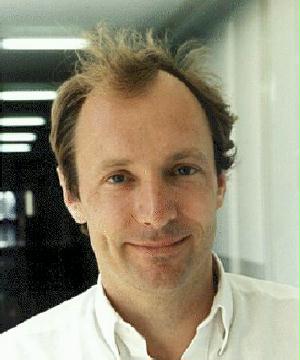
Sir Timothy John "Tim" Berners-Lee, KBE (TimBL or TBL) (born in London, England, June 8, 1955) is the inventor of the World Wide Web and the chairman of the World Wide Web Consortium, which regulate their development.
In 1980, when still a free contractor at CERN, Berners-Lee proposed a project based on the concept of hypertext (hypertext) to facilitate sharing and updating information among researchers. With help from Robert Cailliau he built a prototype system named Enquire.
After leaving CERN to work at John Poole's Image Computer Systems Ltd, he returned in 1984 as a fellow researcher. He used similar ideas that he used in Enquire to create the World Wide Web, which he designed and built the first browser (called WorldWideWeb and developed on NeXTSTEP) and the first Web server called httpd.
The first website Berners-Lee (and therefore it is also the first website) located at http://info.cern.ch/ (archived) and put online for the first time on August 6, 1991.
In 1994, Berners-Lee founded the World Wide Web Consortium (W3C) at the Massachusetts Institute of Technology.
Until now, Berners-Lee still remain humble and have no desire to get the popular status. Many still do not know this man's work force, the World Wide Web.
One of the greatest contributions in advancing the World Wide Web is by no patent so that still may be used freely.
On July 16, 2004 he was given an honorary KBE by the Queen Elizabeth II in honor of his services.
3. Linus Torvalds
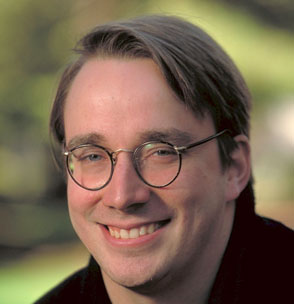
Linus Benedict Torvalds (born December 28, 1969 in Helsinki, Finland) is a Finnish software engineer who is known as a pioneer of the Linux kernel development. He now acts as the coordinator of the project.
Linux inspired by Minix (an operating system developed by Andrew S. Tanenbaum) to develop a Unix-like operating systems (Unix-like) that can be run on a PC. Linux now runs on a variety of other architectures.
When Linus Torvalds, a Finnish student taciturn distributing source code (source code) floppy-sized Linux kernel via the Internet in 1991, he had no idea that what gave birth to the commencement of a business worth billions of dollars in the future.
He even did not expect Linux became the most promising operating system, which can be embedded into the servers, desktop computers, tablet PCs, PDAs, mobile phones, GPS, robots, cars up to NASA's shuttle-made.
Not only that, a lot of maniacs Linux (Linuxer) who bought the device made by Apple and replace with a Linux operating system. For me it is a little crazy, remember to delete the operating system Mac & iPod means throwing money and replace the operating system is quite difficult compared to Windows-based desktop. Currently, 20% desktop market share around the world use Linux well above Machintosh and continue to pursue the Windows desktop. And 12.7% servers around the world are using Linux, well above the UNIX, BSD, Solaris, and continued to increase its market share erode Microsoft's servers.
Currently, Linus left promising position at a semiconductor company Transmeta and lives with his wife and 3 children on a hill in the village in Portland, Oregon, USA, adjacent to the headquarters of the Open Source Development Labs. This nonprofit organization is staffed by 20-something programmer who has a passion almost equal to Linus. They continue to develop the Linux kernel is now of size 290 megabytes or more than 9 billion lines of code. Linux and his team received input lines of code from around the world, sort, set priorities and incorporate the most brilliant idea into the kernel. LSD itself backed by dozens of IT giants like IBM, HP, Dell and Sun, both in terms of material and human resources.
Linus not the first to give away the source code for this pattern is common in the early growth of the computer industry. But Linus successfully set a standard that forces many developers come to free the source code of their programs, ranging from BSD, Solaris, Suse, Java up to Adobe.
Although only paid hundreds of thousands of dollars per year, Linus has created many multi in the computer industry ranging from RedHat, Suse, Debian, Mandriva, Ubuntu and many other open source software developers. Almost nothing had changed from Linus. When he arrived late at an IT conference, he did not even hesitate to sit on the floor in shorts and shoes, her favorite sandals. He did not even angry when giving a speech at the lectern and interrupted by several BSD programmers who come to the front stage claiming that the BSD kernel is much more powerful than the Linux kernel. He even did not hesitate to wear a T-Shirt protesters posed BSD and continued his speech.
According to Linus, what it does is just to share. In contrast to Richard M. Stallman a fanatic with the concept of free software, Linus only emphasize the openness (open), regardless of whether then in a mixed operating system and proprietery free program.
Any words of Linus nearly became the word among Linuxer which creates a certain standard of value. Any publications, speeches, press release email dab always been waiting for millions of people. In his busy, Linus took a ride down the hill and drink at the bar the village.
4. Richard Stallman
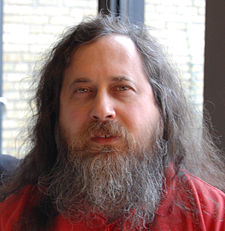 is the founder of the free software movement, GNU project, and the Free Software Foundation. He is also a famous hacker. Is that work on GNU Emacs, GNU C Compiler, and GNU Debugger. Stallman also wrote the GNU General Public License (GNU GPL or GPL), free software license is the most used, and has inspired the concept of copyleft.
is the founder of the free software movement, GNU project, and the Free Software Foundation. He is also a famous hacker. Is that work on GNU Emacs, GNU C Compiler, and GNU Debugger. Stallman also wrote the GNU General Public License (GNU GPL or GPL), free software license is the most used, and has inspired the concept of copyleft.5. Tsutomu Shimomura
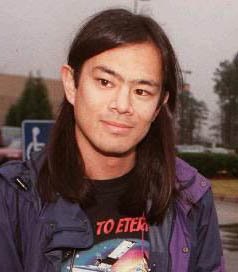
is a scientist and computer security experts the Japan-United States, based in the United States, the famous after he and a computer journalist John Markoff detect and help the FBI catch the hacker named Kevin Mitnick stubborn one of the 5 best black hat world.
When he issued arrest Mitnick AT & T mobile phone by using the frequency of mobile telephone signals and other equipment System Requirements, he sat down and began to track the presence of Mitnick, while the FBI stopped seeing her work, and listen to every suggestion that comes out of his mouth. and finally caught Mitnick ..
Takedown, his book, adapted into film in 2000 Takedown.
Sumber: itsecurity, wikipedia, Kaskus
Read more..
Tuesday, June 23, 2009 | 0 Comments
Subscribe to:
Posts (Atom)


